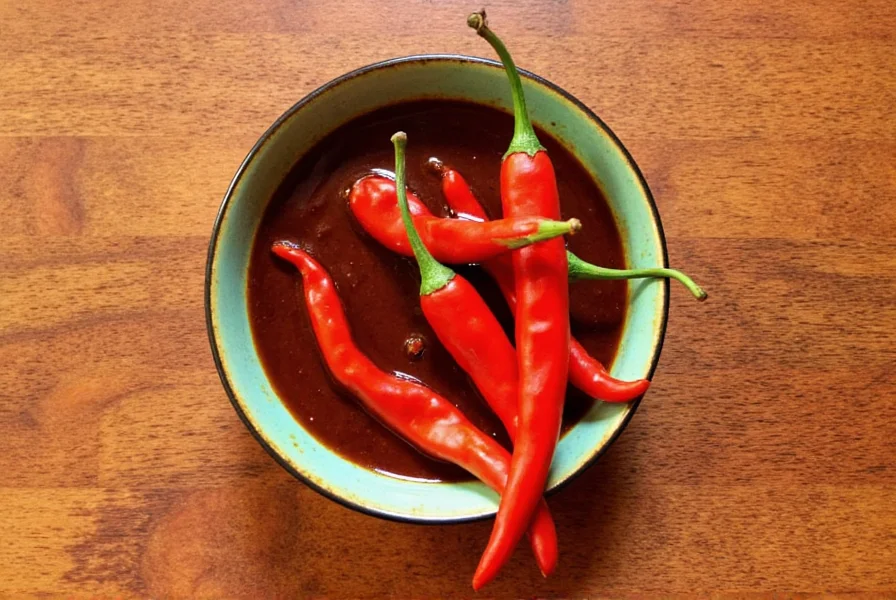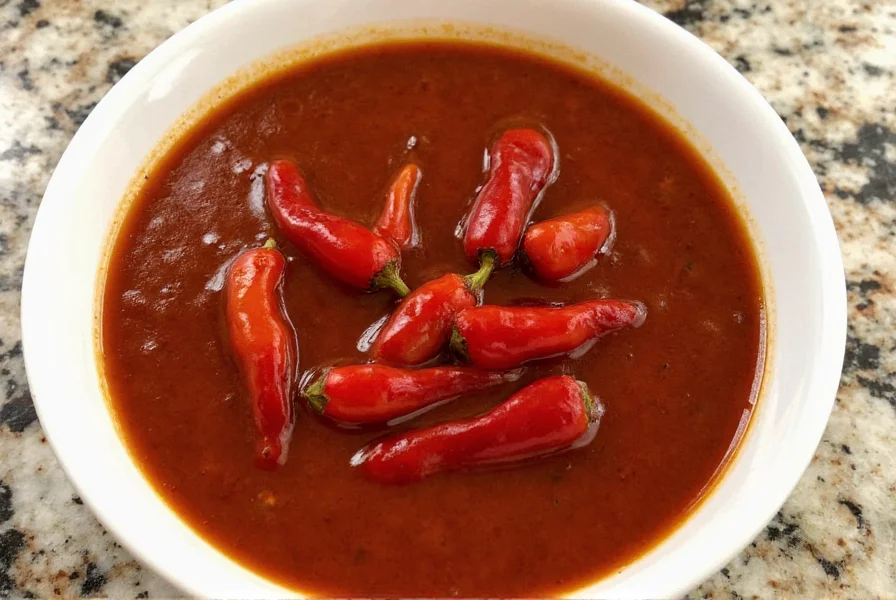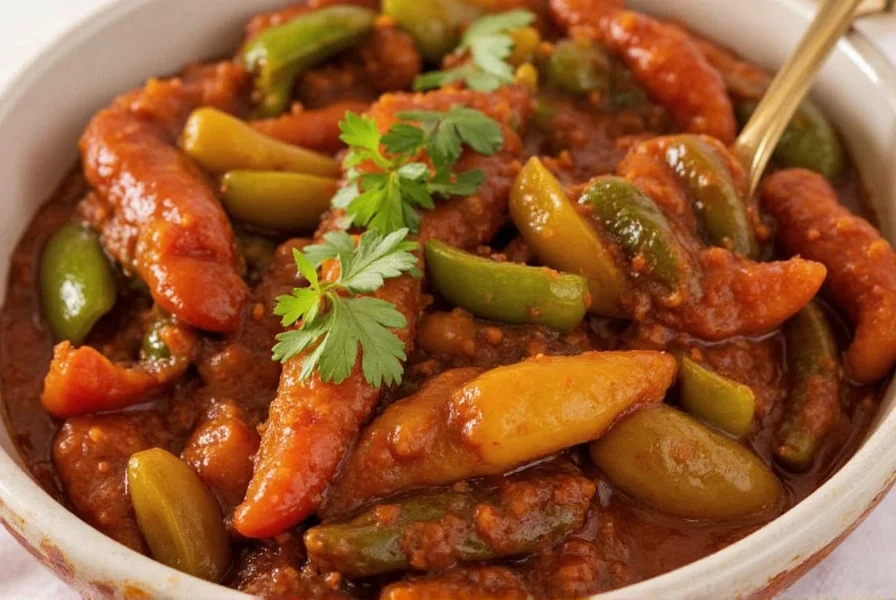Spice Up Your Life: The Smoky, Spicy Magic of Chiles in Adobo Sauce
When it comes to bold flavor with a smoky kick, few ingredients can rival the allure of chiles in adobo sauce. Whether you’re a home cook looking for a flavor shortcut or a spice enthusiast chasing depth and complexity, this tangy, slightly sweet, and smoky chili blend is your new kitchen MVP.
Table of Contents
- What Are Chiles in Adobo Sauce?
- A Taste of History and Culture
- Flavor Profile: What Makes It Special?
- Top 7 Cooking Tips Using Chiles in Adobo
- Brand Showdown: Which One Should You Buy?
- Buying Guide: How to Choose the Best Jar
- Global Recipes Featuring Chiles in Adobo
- Final Thoughts: A Must-Have in Your Spice Cabinet
What Are Chiles in Adobo Sauce?
Chiles in adobo sauce are typically smoked, dried jalapeños (called chipotles) that have been rehydrated and simmered in a tangy, tomato-based sauce made with vinegar, garlic, cumin, oregano, and other spices. The result? A rich, smoky, mildly spicy sauce packed with umami and a touch of sweetness.

The sauce is thick, clinging to everything it touches — meat, beans, rice, tacos, even mayo. It’s like liquid fire meets velvet texture. And the best part? It keeps well in the fridge once opened, giving you weeks of flavor-punching power in one little can.
A Taste of History and Culture
The origins of chiles in adobo trace back to central and southern Mexico, where indigenous peoples smoked and preserved peppers long before Spanish colonization. The word “adobo” comes from the Spanish word “adobar,” which means to marinate or season. Over time, Mexican cooks began preserving chipotle peppers in a red sauce that balanced smoke, acid, and spice — creating what we now know as chiles in adobo.
In regions like Oaxaca and Veracruz, this preparation was not just about flavor but also food preservation. Before refrigeration, drying and pickling were essential techniques. Adobo sauce allowed for longer shelf life while infusing every bite with a signature richness.

Flavor Profile: What Makes It Special?
Let’s break down the flavor components of chiles in adobo:
- Smokiness: From the chipotle (smoked jalapeño).
- Heat: Medium-level spiciness (around 2,500–8,000 SHU on the Scoville scale).
- Sweetness: Natural sugars in the sauce balance the heat.
- Acidity: Vinegar adds brightness and sharpness.
- Umami: Garlic, tomato, and spices deepen the savory notes.
This complex interplay makes chiles in adobo incredibly versatile. Use it as a marinade, a finishing sauce, or a secret ingredient in soups, stews, and dips.
Top 7 Cooking Tips Using Chiles in Adobo
If you're ready to dive into the world of smoky deliciousness, here are some practical ways to use chiles in adobo like a pro:
- Add to Ground Meat: Stir a spoonful into taco meat or burger patties for instant depth.
- Blend into Mayo: Mix with mayonnaise for a smoky aioli that elevates sandwiches and burgers.
- Kickstart Soups and Stews: Add a spoonful when sautéing aromatics for a bold flavor base.
- Marinate Chicken or Pork: Slather onto proteins before grilling or roasting.
- Stir Into Beans: Liven up black or pinto beans for a side dish that steals the show.
- Make a Quick Salsa: Blend with tomatoes, lime juice, and cilantro for a fast, smoky salsa.
- Enhance Mac & Cheese: Yes! Just a teaspoon gives it an unexpected twist.
Brand Showdown: Which One Should You Buy?
Not all chiles in adobo are created equal. While they all bring heat and smokiness, each brand has its own unique balance of spice, sweetness, and acidity. Here's a breakdown of popular options:
| Brand | Spice Level | Smokiness | Sweetness | Best For |
|---|---|---|---|---|
| Vianova | Mild | Medium | High | Beginners or mild spice lovers |
| La Costeña | Medium | High | Medium | Authentic Mexican flavor |
| Goya | Medium-High | Medium | Low | Broad culinary use |
| Hatch | High | High | Medium | Heat-seekers and adventurous cooks |
| Ranchero | Medium | Low | Medium | Everyday pantry staple |
Pro Tip: If you're unsure, try La Costeña first. It’s widely available, consistently flavorful, and strikes the perfect balance between smoky and spicy.
Buying Guide: How to Choose the Best Jar
Here’s what to look for when picking out your next jar of chiles in adobo:
- Whole Peppers vs. Sliced: Whole peppers give you more control over how much heat and texture you want. Sliced ones are easier to use straight from the jar.
- Thickness of Sauce: Some brands have a thinner, more pourable sauce; others are thicker. Think about how you’ll use it — slathering vs. drizzling.
- Preservatives: Check labels if you prefer natural or organic products. Some contain additives like sodium benzoate.
- Oil Content: Some jars have visible oil floating on top, which helps preserve flavor and add richness.
- Can Size: Most come in 7-oz cans. Consider buying in bulk if you use them often, or opt for smaller specialty jars if you want to experiment.
If you're shopping online, read reviews for flavor notes and user experiences. Some brands may lean sweeter or saltier than others.
Global Recipes Featuring Chiles in Adobo
You don’t need to stick to Mexican cuisine to enjoy chiles in adobo. This versatile ingredient plays well in dishes across the globe:
- Mexican-Style Tacos al Pastor: Marinate pork shoulder with chiles in adobo, pineapple juice, and spices for a street-food favorite.
- Tex-Mex Queso Dip: Blend with cheese, evaporated milk, and beer for a creamy, spicy dip.
- Spanish-Inspired Shakshuka: Add a spoonful to the tomato base for a smoky twist on the North African classic.
- Asian Fusion Ramen Boost: Stir into ramen broth for a smoky-spicy layer beneath soy and miso flavors.
- American BBQ Rub: Mix with brown sugar, paprika, and garlic powder for a spicy-sweet barbecue rub.
Final Thoughts: A Must-Have in Your Spice Cabinet
Whether you're a professional chef or a weekend warrior in the kitchen, chiles in adobo sauce deserve a permanent spot in your pantry. They offer an easy way to add big flavor without complicated steps or exotic ingredients. Once you start using them, you’ll find yourself reaching for that little red jar again and again.

So go ahead — open a jar, smell that smoky aroma, and let your taste buds dance with joy. Spice isn’t just heat; it’s soul. And chiles in adobo? That’s pure soul in a jar.











 浙公网安备
33010002000092号
浙公网安备
33010002000092号 浙B2-20120091-4
浙B2-20120091-4